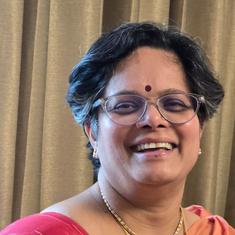In Patna, the issue triggers impassioned debates. “Of course, Nitish will have to pay a huge price for this,” said Prabhu Manjhi, a resident of Jagdeopath Musahari, a locality of people belonging to the Mahadalit caste of Musahar in Patna. Both Jitan Ram Manjhi and Prabhu belong to this caste.
“Manjhi is being pushed out because he is a Dalit,” Prabhu remarked. But the moment he stopped speaking nearly half a dozen women, sitting nearby and listening to him, spoke up, faulting the incumbent chief minister.
“Tell me one thing that Manjhi has done for us,” said Rukmani Devi. “All his talks are empty and pointless. And they are against whom? Nitish? Did any chief minister apart from Lalu Prasad (of Rashtriya Janata Dal) and Nitish bother to look towards Musahari?”
Outside the state capital, the debate is less heated. “How can we leave arrow (the election symbol of JD (U))?” asked Shyamji Manjhi of Balwa Kwari village in Vaishali district. “Isn’t it the symbol that has given us whatever we have today?” He pointed to the village’s pucca houses built under Indira Awas Yojna, the passbook of his old-age pension, and an old radio given by the Nitish Kumar government to all Mahadalit families in 2011. The radios still act as the sole source of information for him and many other villagers.
“When Manjhi became the chief minister, people asked me why I still carried load on my head,” recounted Kabutari Devi, another resident of Balwa Kwari village. “Wasn’t my caste brethren the chief minister now? But I haven’t seen any change in my life. In fact, I haven’t even seen him. He lives in Patna and does all his politics there. He does not have the time to think about us. But Nitish has.”
Distinct identity
In Bihar, there are a total of 22 Scheduled Castes that account for nearly 16% of the population. Of these, Paswans, who constitute the core vote base of Ramvilas Paswan’s Lok Janshakti Party, are numerically the strongest, making up around 4% of the state’s population. For long, Nitish Kumar tried to nurture non-Paswan Dalit castes, declaring them Mahadalits and announcing a series of packages for their upliftment.
Through his efforts, Nitish Kumar greatly succeeded in wooing – and providing a distinct identity to – Mahadalits. But since Nitish Kumar belongs to a non-Dalit caste called Kurmi, Manjhi (a Mahadalit by caste) took no time in emerging as a Dalit icon once he was made the chief minister last May following the lacklustre performance of the JD(U) in the Lok Sabha elections.
Yet whether the Dalit discourse has percolated down to actual voters belonging to Mahadalit castes remains a matter of debate. Nitish Kumar is still loved by most Mahadalits and his reign is remembered fondly by them – a factor that may limit Manjhi’s ability to pulverize the JD(U)’s Mahadalit base.
The Manjhi factor
Even if it is assumed that the Manjhi factor is working among a section of the Musahar caste, it seems non-existent among other castes in the Mahadalit category. “Nitish gave him (Manjhi) the power, and now he wants it back. What is wrong in this?” asked Chandrakala Devi, a resident of Ravidas Tola of Badi Yusufpur locality in Hajipur. Ravidas Tola has nearly 400 households, all belonging to a Scheduled Caste called Chamar, another prominent segment of Mahadalit.
“Look at those cycles which Nitish gave to our daughters, those school dresses they wear and the smile on their faces,” said Sibli Devi, another resident of Ravidas Tola. “We are not ungrateful like Manjhi.”
To be sure, Manjhi has shaken a section of the Mahadalit vote base of Nitish Kumar. But it will be a great deal harder for him to influence all, especially now that he has been removed from the JD(U), a party credited with bringing Mahadalits to the centre of the state’s politics. However, this does not mean that Nitish Kumar can assume the support of Bihar’s Scheduled Castes. The latest imbroglio in fact has posed a new challenge for the former chief minister to find a way to breathe fresh life into his appeal among Mahadalits.










